Blue coats are a unique trait within cats that cat lovers have sought for years. As compared to other coat colors, such as orange and black, blue coats tend to be more rare to come across. For most cats, a blue coat results from a mutation that dilutes black hair, producing a blue-grey color. Look at some of the most popular cat breeds with blue coats.
What Cat Breeds Have Blue Coats?
Not all cat breeds have blue fur, but a special few only have blue fur, while other breeds can sometimes be born with this unique color – although rarely. Below we’ve compiled a list of 12 blue cat breeds. Their shades may vary, but one thing they all share is that stunning steely gray-blue fur.
Blue Domestic Shorthair
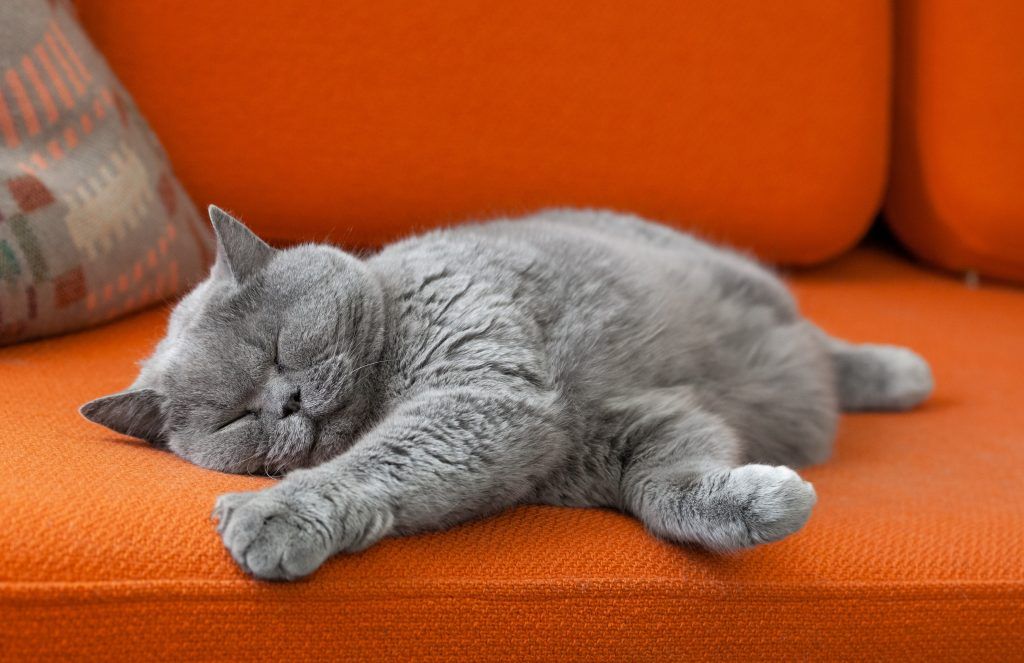
Domestic shorthairs are essentially “mutts” of the cat world. They are created through the mixing of traditional breeds to produce kittens that have short hair. They aren’t recognized and are essentially a “catch-all” group for cats that aren’t easily categorized into traditional breeds. With this, they can come in a variety of unique colors. Although it is generally rare, one type of domestic shorthair is a blue pattern, which typically appears as a steely grey.
American Shorthair

In contrast to domestic shorthairs, American shorthairs are a recognized breed within the cat world. They originated around the 1900s as farm cats for Americans across the country. They tend to be slightly larger cats and more muscular than domestic shorthairs, which is related to their original breeding purpose.
Just like domestic shorthairs, American shorthairs come in a variety of coat colorings and patterns, with blue being one that has risen in popularity over the past few years!
Chartreux
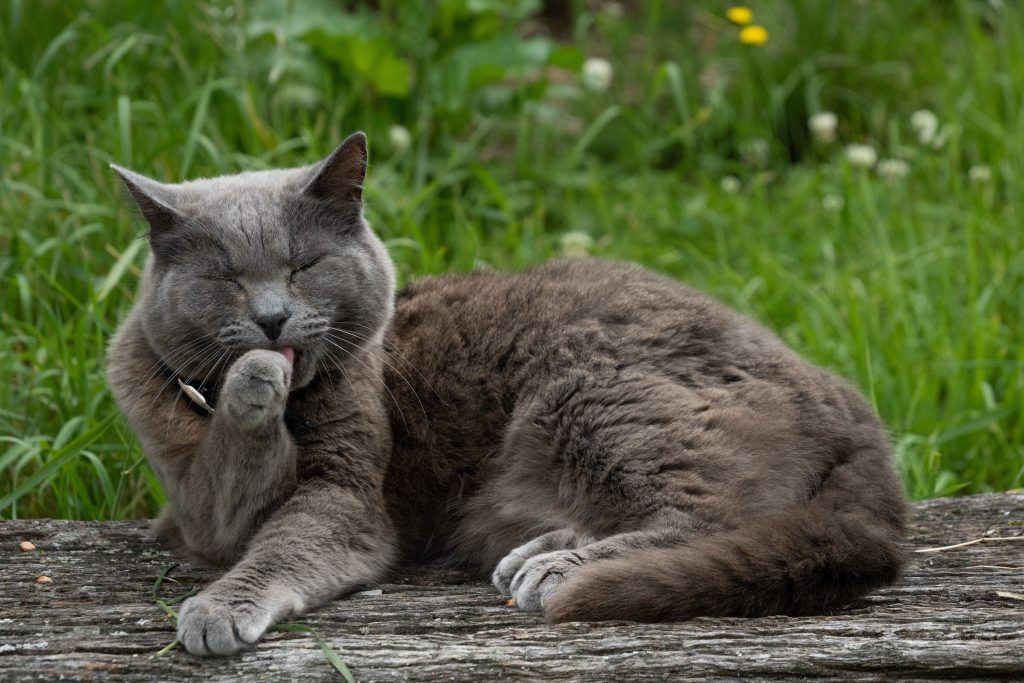
The Chartreux is a breed that has been popular for centuries. Legend states that these cats arose around the 13th century from feral mountain cats brought to France from Syria. They were so popular that they can be found throughout French art and literature from the 1500-1700s.
As a breed, the Chartreux has a strong and muscular build. They also have striking gold or orange eyes that compliment their ur well. Their head is very wide and strong, with round cheeks that give them a smiling appearance.
Burmese

The Burmese is yet another breed that has a lot of variability in terms of coat coloration and pattern. For instance, they come in a slew of solid colors, from blue to brown. They also can come in tortoiseshell patterns! Their coat is extremely dense and sleek, which makes them an extremely soft cat to pet. In tandem with their big, bright eyes, blue-colored Burmese cats are truly a sight to behold.
As a pet, the Burmese is incredibly lovable and friendly. They are incredibly people-driven and make great pets for people who have children.
British Shorthair

Another extremely common blue cat breed is the British shorthair. These cats are one of the most popular blue breeds, and are sometimes even referred to as the “British Blue”. British shorthairs come in a variety of solid colors, although blue is one of the most well-known.
Blue British shorthairs are incredibly striking, having a steely coat with striking orange eyes. As a pet, they are affectionate and love attention. With that said, they tend to be more shy and individualistic than other breeds. At the end of the day, most British shorthairs just want to lie down and spend some leisure time with their owners.
Blue Bengal
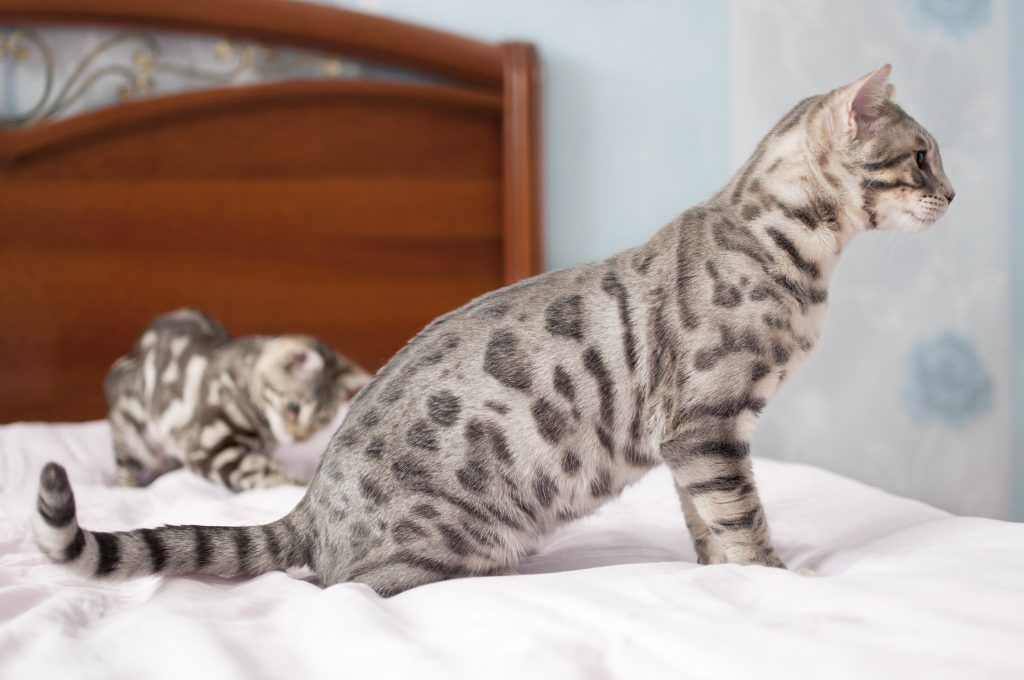
Bengals are an up-and-coming breed that has been growing in popularity over the past few years. They have a wild appearance, with long, muscular bodies and sleek fur that can come in patterns reminiscent of wild cats. As pets, Bengals are high-energy cats that require a lot of entertainment to keep them happy and healthy.
In addition to the traditional range of browns and tans, Bengals can also be bred to produce light blue and grey coats. In appearance, these coats are truly striking, and almost look out of this world!
Korat

The Korat is an ancient breed that comes from modern-day Thailand. They are incredibly energetic and wiry small cats that love to be the center of attention. About other pets, Korats don’t tend to mix the best, as they like to be the leader of the pride.
Korats are incredibly striking in appearance, having a short coat that is a gorgeous blue color. Additionally, they have an incredibly unique heart-shaped head that sets them apart from other blue cat breeds. On top of their appearance, many owners love having Korats as they are extremely non-vocal, making them great for quiet, low-speed households.
Nebelung
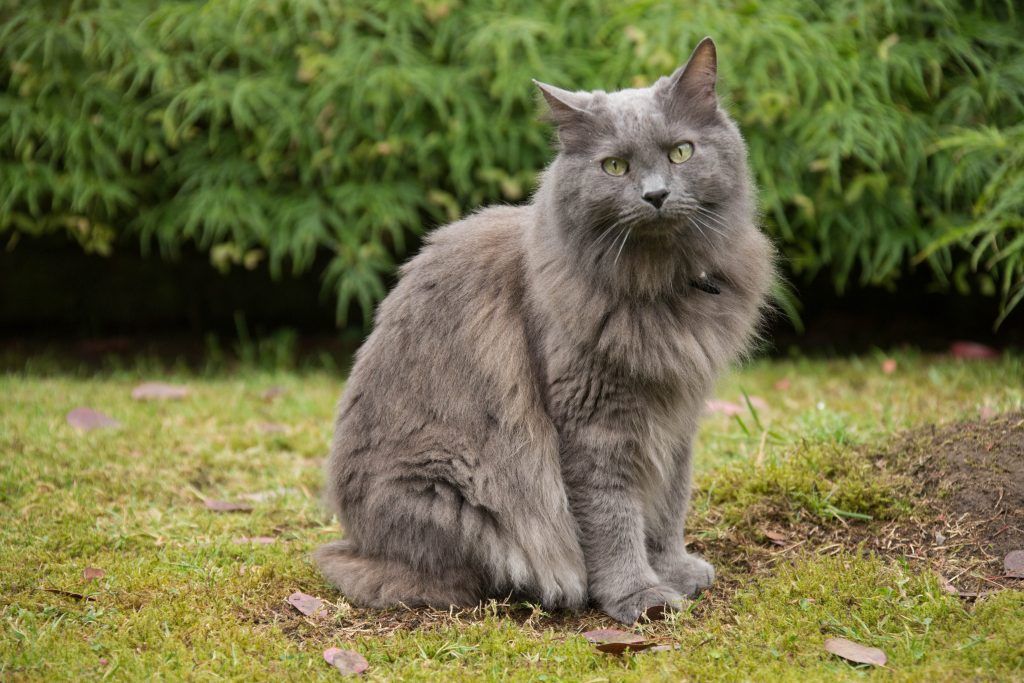
Moving onto a lesser-known breed, the Nebelung is a unique cat that was first bred in the 1980’s! Nebelungs are quiet and affectionate cats that love to enjoy a slow day inside with their owners. With that said, they aren’t afraid to play and usually love to climb, run, jump, and even play fetch on occasion.
Nebelungs have a striking appearance, boasting medium-length hair that is blue with silver tips. They have muted green-yellow eyes, which complement their docile personality well!
Russian Blue
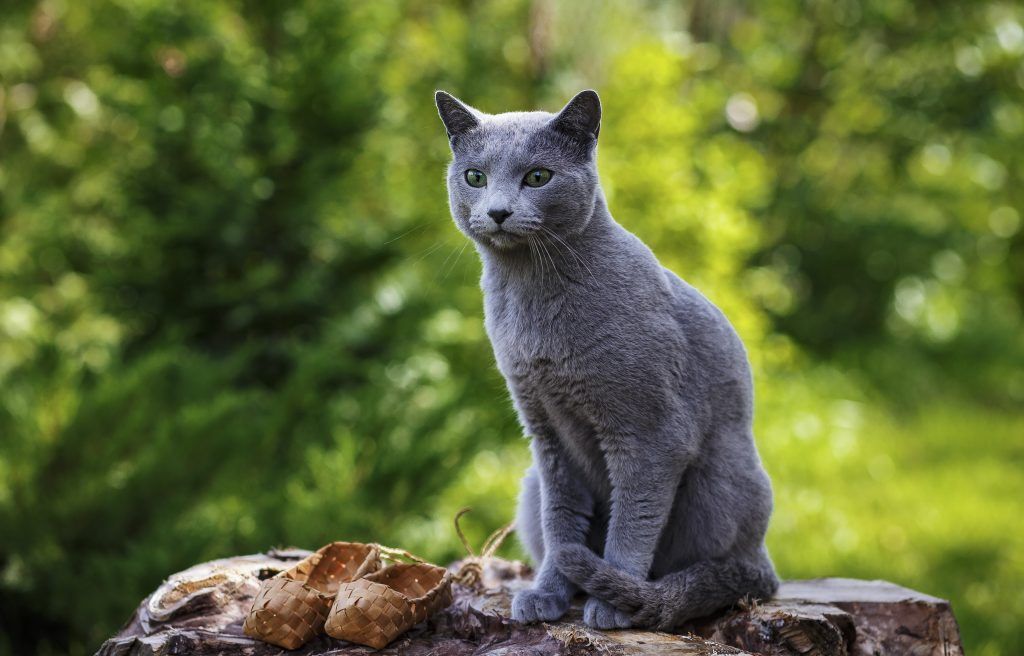
The Russian blue is one of the most popular cat breeds, beloved for their unique coats, captivating eyes, and shy personalities. They have a double coat that is sleek and dense, which makes them feel incredibly soft to pet. Additionally, Russian blue cats also have pale green eyes that draw you in.
They tend to be more shy on average than other cats, although their personality tends to vary with each kitten. With their personality, they generally aren’t fond of new experiences or change. This means that any new introductions for your Russian blue should be done slowly!
Oriental Shorthair
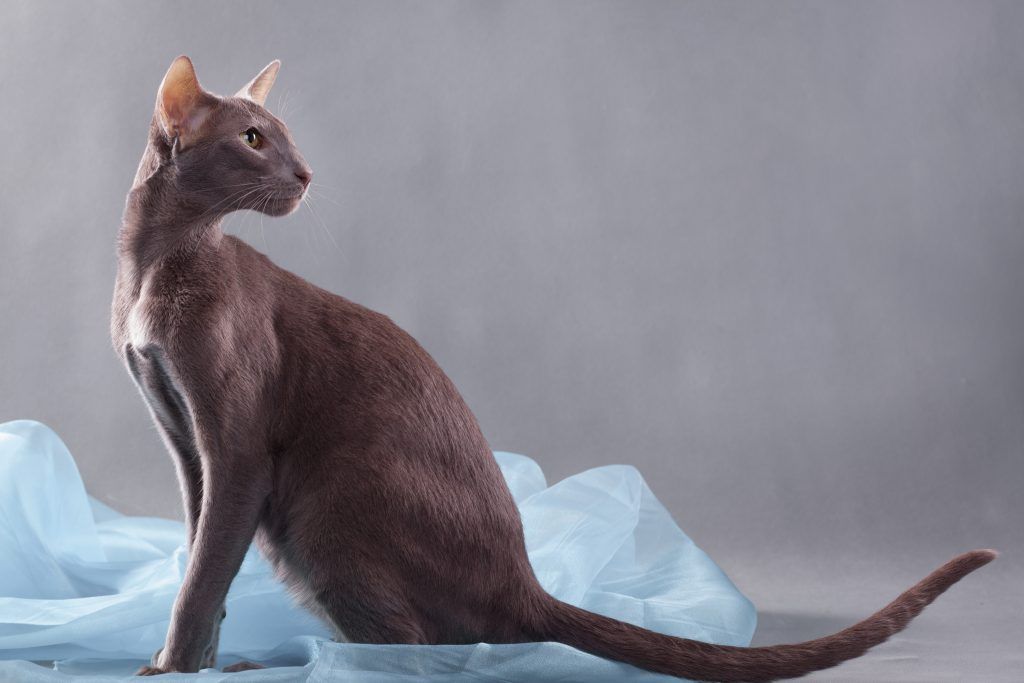
Oriental shorthairs have one of the most unique appearances on this list, with elongated bodies and angular heads that give them a regal and refined look. Oriental shorthair fur is short, dense, and glossy, which adds to their streamlined look. Their coat color can vary from cat to cat, although many people enjoy the solid blue variety, which tends to look like a powdery grey.
Persian
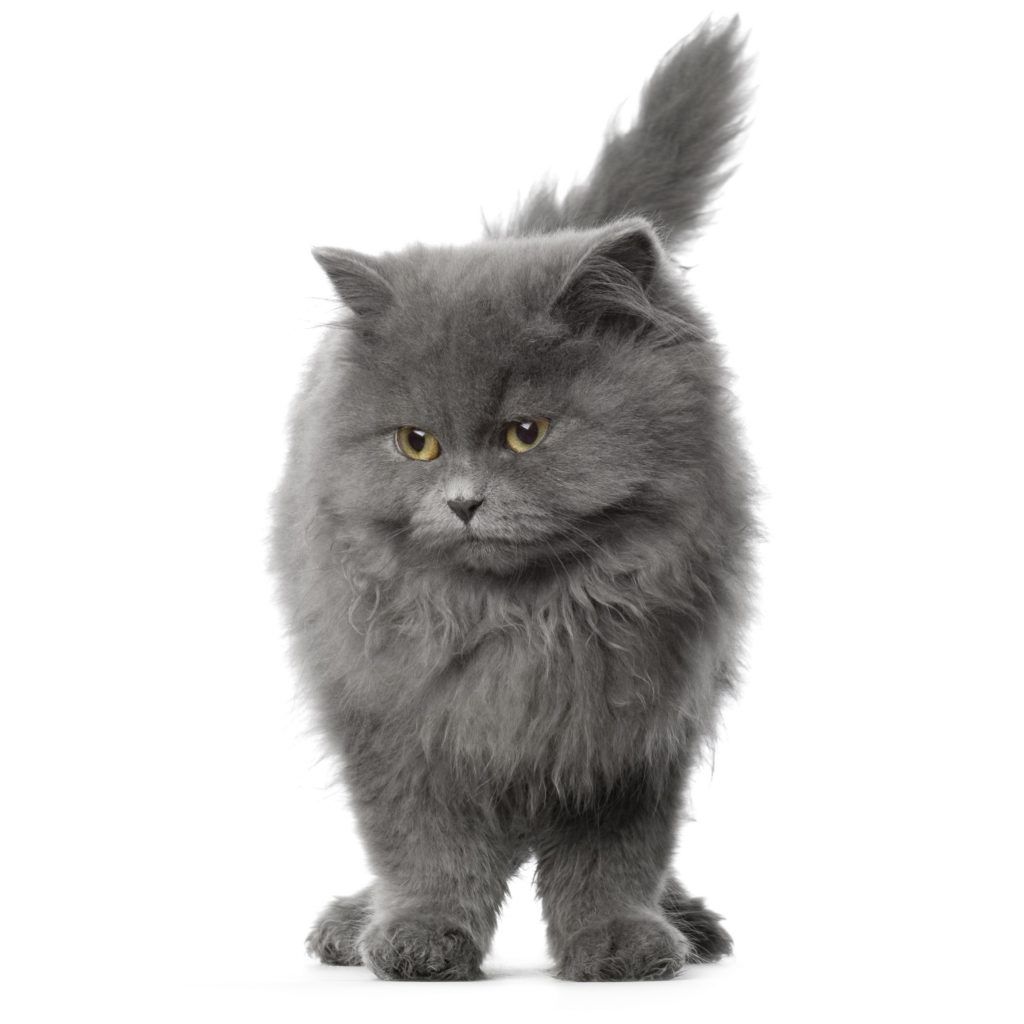
Sometimes described as walking tufts of fur, Persian cats are adored by many. In terms of hair, Persian cats have a lot of it! They have one of the longest coats in the cat world, which makes them a joy to pet. Additionally, Persians can come in blue varieties.
One interesting thing about Persian cats is that they have flattened faces. To some, this can be an undesirable feature, while to others it can be the decision-maker for choosing to buy or adopt a Persian cat!
Dwelf

Dwelf cats are one of the most unique cats out there. They have shortened legs and a hairless body, which helps to give them a strong and stocky appearance. Likewise, many Dwelfs have curled ears. These traits can add a bit more requirements in terms of their care and maintenance, which can drive people away from having them as pets.
One trait that is striking with Dwelf cats is their coats, or rather, their soft skin. Dwelf cats have gorgeous skin that ranges in color from light greys to dark steely blues!























